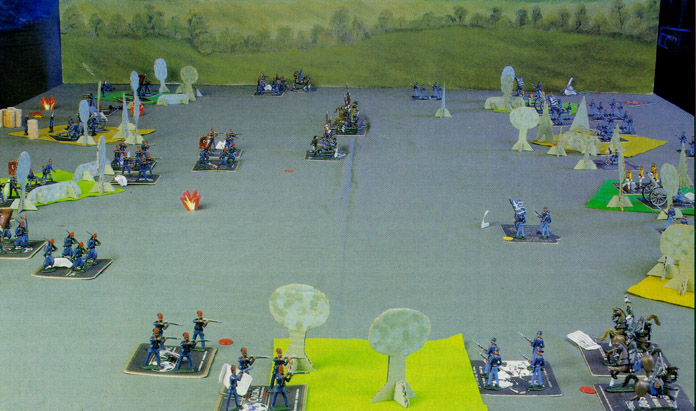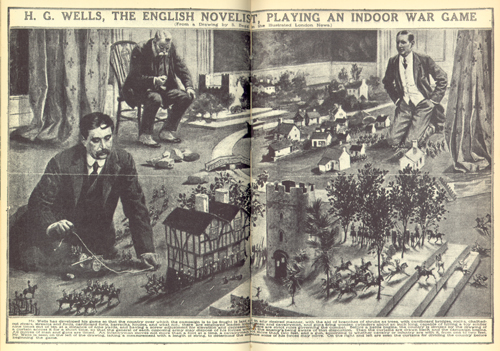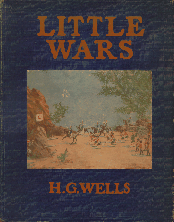Miniature Wargaming Club Leuven

'Schild en Vriend' is an old Flemish battlecry,
used in the rebellion
of the city of Brugge against the French, May
18, 1302. Legend tells
that it was used to differentiate between
the French-speaking (who could
not pronounce 'schild') and
Flemish-speaking citizens. Nowadays,
historians tell us that it was
probably 'Des Gilden Vriend'.
Little Wars - H.G.Wells
Little Wars, written by H.G.Wells, and first published in 1913,
is the original hobby wargame. In this charming little book, the author explains
how one can play military battles using toy soldiers and spring-loaded cannon.
However, Little Wars was preceded by Floor Games, in which
H.G.Wells explains how to organize games with all sorts of toys, figurines,
and buildings blocks to be found in the children's room.
Contrary to what most people think, it is still relatively easy to obtain
copies of these books. I got my copies through the second-hand book services
of Barnes and Noble and Bibliofind. Be prepared to pay, though! During
1999, when I bought these books through these sites, prices started at about
150 US$. The facsimile edition (pictured below) from 1970 can be bought
for around 30.00 US$. Of course, as with all second-hand books, much depends
on the condition of the copy in question.
The November 2000 issue of Wargames Illustrated has a nice report on
how to use Little Wars as a convention game, written by Philip Gray. For
cannon, he used corks that were 'flicked' towards the enemy troops. He used
figures from Irregular Miniatures. They have a 42mm range, mimicking 'toy
soldier style'. A picture of this game is shown here:

Picture from MAKING & COLLECTING MILITARY MINIATURES by Bob
Bard (1957)
The full caption reads: H.G.WELLS, THE ENGLISH NOVELIST PLAYING AN
INDOOR WARGAME
(From a Drawing by S. Begg in the Illustrated London News)

The full caption reads:
Mr. Wells has developed his game so that the country over which the campaign
is to be fought is laid out in any desired manner, with the aid of branches
of shrubs as trees, with cardboard bridges, rocks, chalked-out rivers, streams
and fords, cardboard forts, barracks, houses, and what not; there are employed
leaden infantrymen and cavalrymen, and guns firing wooden cylinders about
an inch long, capable of hitting a toy soldiers nine times out of ten at
a distance of nine yards, and having a screw adjustment for elevation and
depression. There are strict rules governing the combat. Before the battle
begins, the country is divided by the drawing of a curtain across it for
a short time, so that the general of each opposing army may dispose of his
forces without the enemy's being aware of that disposition. Then the curtains
are drawn back and the campaign begins. All moves of men and guns are timed.
An infantryman moves not more than a foot at a time, a cavalryman not more
than two feet, and a gun, according to whether cavalry or infantry are with
it, from one to two feet. Mr. Wells is seen on the left of the drawing, taking
a measurement with a length of string, to determine the distance some of
his forces may move. On the right and left are seen the curtains for dividing
the country before beginning the game.





